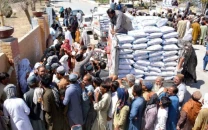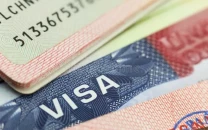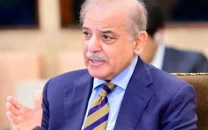Tariffs a $1.4b golden opportunity
With India's US tariffs doubled, Pakistan could drive 29% export surge

The world of global trade is in turmoil, and Pakistan stands at a crossroads. On August 7, 2025, US President Donald Trump announced sweeping tariffs that rattled markets, raised prices for American consumers, and set off a scramble for new suppliers. These "reciprocal" tariffs, covering more than 70 countries at rates from 10% to 50%, are reshaping supply chains.
Pakistan, with low labour costs and a newly secured trade deal, is positioned to benefit. A July 31, 2025, agreement cut Pakistan's US tariff from a looming 29% to 19%, giving it an edge over India, now hit with a punishing 50% tariff after an extra 25% penalty took effect on August 27 for buying Russian oil.
This shift could lift Pakistan's US exports by 29.2%, from $5.1 billion in 2024 to $6.2 billion by August 2026. By leveraging cheap labour, lowering raw material tariffs, and learning from Sri Lanka's reforms, Pakistan could capture part of the $488 billion gap left by China's shrinking US exports. But Chinese retaliation and weak infrastructure mean the window may not stay open.
Trump's tariffs, enacted under emergency powers, aim to reduce US trade deficits by penalising countries with high barriers to American goods. The formula — half the trade deficit divided by exports, adjusted for deals — set Pakistan's tariff at 19%, lower than India's 50%, Bangladesh's 20%, Vietnam's 20%, and Brazil's 50%, but higher than the UK's 10% and Japan's 15%. The August 6 penalty on India targeted its $43 billion in Russian oil imports, which Trump says fund Russia's war in Ukraine. The hike to 50% will likely slash India's $88 billion in US exports — think textiles, pharmaceuticals, and gems — by $25-$40 billion by 2027.
China's 34% tariff is projected to shrink its US exports by $488 billion, especially in clothing, electronics, and toys. This leaves a space for Pakistan, whose 2024 exports to the US were $4.8 billion in 2024, 80% in textiles. Other products include Basmati rice, surgical and hunting goods, and smaller IT and sports goods segments. I estimate a $1.4 billion gain increase to $6.2 billion by August 2026, up from an earlier 24% projection. This is driven by India's loss of textile competitiveness and Pakistan's $0.70/hour labour rate, which is cheaper than India's $2.80/hour, Vietnam's $2.73/hour, and only slightly higher than Bangladesh's $0.50/hour.
However, Pakistan's 20% tariff on raw materials like cotton and high anti-dumping duties on man-made fibre hurt value-added textiles compared to Vietnam's 9.6% or Malaysia's 5.6%. Still, with US apparel prices up 38% and footwear up 40%, Pakistan fits the profile of the low-cost supplier American retailers now seek.
Textiles will drive 75% of Pakistan's $1.4 billion gain, adding $1.05 billion in apparel orders. Agriculture, mainly rice and processed spices, will contribute 18% ($252 million), benefiting from a 4.1% rise in US food prices. Surgical goods and emerging IT exports make up the remaining 7% ($98 million). Pakistan's wage advantage matters: labour is 20-30% of garment costs. But energy expenses, 15-20% of production budgets, plus slow ports and the 30% reliance on US cotton imports remain hurdles.
India's 50% tariff is a severe blow to its $22 billion textile, $15 billion pharmaceutical, and $10 billion gems markets. Higher wages and an 18.1% raw material tariff had already made India less competitive. Now, Pakistan can capture cotton garment orders where it directly competes with India. Bangladesh, despite its 20% US tariff, is projected to boost exports 34.1% ($8.5 billion to $11.4 billion) due to low wages, but its 27.6% raw material tariff limits gains. Vietnam expects a 30% jump ($103 billion to $133.9 billion), led by electronics and textiles, helped by skilled labour and low input tariffs. Cambodia's 27.1% gain ($7 billion to $8.9 billion) and Sri Lanka's 22% rise ($2.5 billion to $3.1 billion) rely on textiles, but their smaller size limits absolute impact.
Brazil's 50% tariff and $1.58/hour wages hold growth to 13.1% ($32 billion to $36.2 billion), despite strong agriculture. The UK (10% tariff) and Japan (15%) are forecast to gain around 17% each in cars and pharmaceuticals, but high wages rule out textiles. Canada and Mexico, hit with 35% and 25% tariffs, are set to lose $300 billion and $238 billion in exports, creating niches for Pakistani rice and leather. The EU's 15% tariff and $22 billion in retaliatory duties barely affect Pakistan's Asia-focused gains.
Yet Pakistan faces serious risks. China's 32.6% tariffs on US goods, including cotton, threaten 30% of Pakistan's textile inputs. A 0.5% US GDP drop in 2025 could trim $55-$92 million from exports. WTO challenges, led by Canada, are unlikely to succeed due to the US president's broad powers under the IEEPA. Over-reliance on textiles, which make up 80% of exports, and chronic infrastructure problems could cap gains.
To win big, Pakistan needs to move fast. First, cut raw material tariffs from 20% to 10%, following Sri Lanka's 2018 Export Development Act, which lowered input duties and added $1 billion to textile exports in two years. This would cut costs by 5-7%, allowing Pakistan to underprice Bangladesh. Second, seek a US tariff cut to 15%, using the oil reserves deal as leverage, as Finance Minister Muhammad Aurangzeb did in July 2025 talks. Third, offer five-year tax breaks for textile and IT exporters, modelled on Bangladesh's 2023 SME incentives that boosted exports by 15%.
Fourth, invest $500 million in energy subsidies to lower electricity costs, as Vietnam did in 2024. Fifth, diversify into IT, halal foods, and meat, aiming for $100 million in US exports by 2026 with training for 50,000 coders. Sixth, secure cotton supplies from Brazil or India to guard against Chinese disruptions.
Sri Lanka's 2018 reforms are instructive. By cutting tariffs and speeding customs, it added $1 billion to exports. Pakistan should amend the Customs Act 1969 to reduce import clearance from seven days (often a month in practice) to three and set up a $200 million export fund for SMEs to attend US trade shows and secure FDA approvals. These measures could add $2-$3 billion to exports, matching the $5-$10 billion potential gains from Trump's tariffs.
Trump's tariff war is as much about geopolitics as economics. Pakistan's 19% tariff and cheap labour make it a contender for $1.4 billion in extra US exports. But without quick fixes — lower tariffs, cheaper energy, and market diversification — this opportunity could vanish. By acting now, Pakistan can turn global trade chaos into a springboard for growth.
THE WRITER IS A TRADE EXPERT WITH OVER 35 YEARS OF EXPERIENCE IN INTERNATIONAL TRADE, A COMMODITIES CONNOISSEUR, AND FORMER VICE PRESIDENT OF KCCI






















COMMENTS
Comments are moderated and generally will be posted if they are on-topic and not abusive.
For more information, please see our Comments FAQ